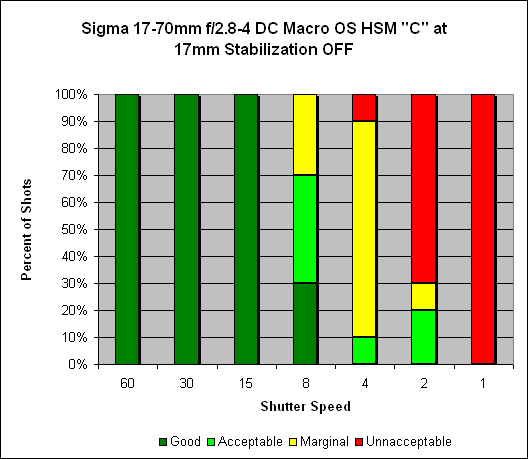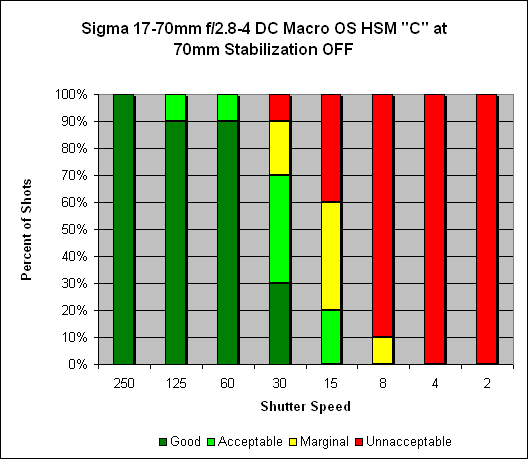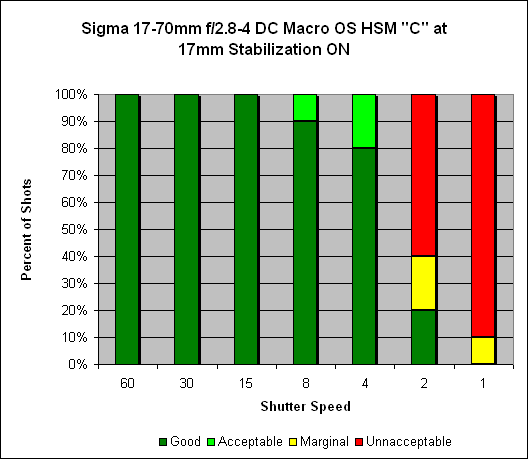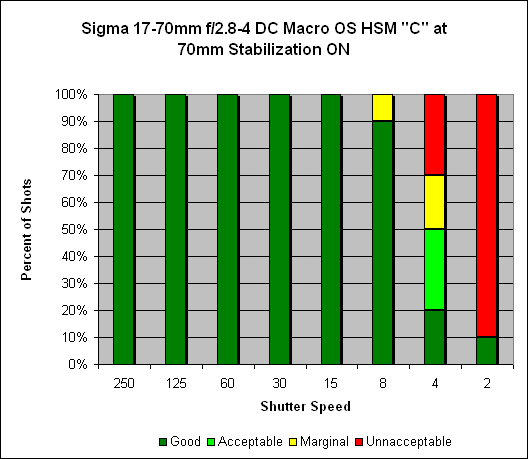Most people tend to think of image stabilization as being mainly for telephoto lenses. While it's true that their longer focal lengths tend to magnify the effects of camera shake, image stabilization can provde a very useful assist at wider angle focal lengths as well; anyone who's ever tried to blur the image of a waterfall, while keeping the surrounding landsape tack-sharp knows exactly what I'm talking about.
At 17mm, it's fairly obvious to see about two stops of hand-holding improvement. Image stabilization systems aren't really as effective at wider angles, but as soon as you start shooting movies with them, they become very useful.
 |
| Mouse over this chart to show results with IS activated. |
Zoomed in to 70mm, it's also looking like at least three stops of hand-holding performance: without OS activated, we see good shots at a maximum of 1/60 of a second. With OS activated, we can shoot as slow as 1/8 of a second and still get tack-sharp images.
 |
| Mouse over this chart to show results with IS activated. |
IS systems tend to provide more benefit to less-stable shooters than very steady ones, so most users will see the same or greater amounts of shake reduction as we measured here. You can read more about our IS test methodology here: SLRgear IS Test Methodology, v2.

